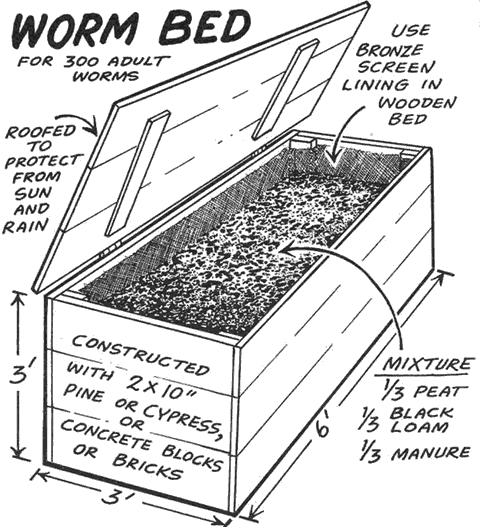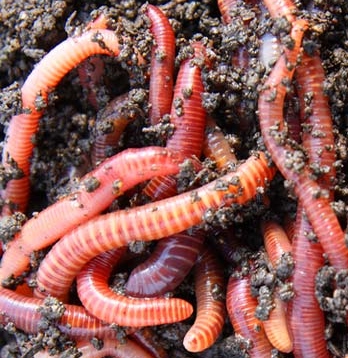The Facts About Where To Find Red Wigglers Uncovered
Table of ContentsThe 7-Second Trick For Where To Find Red WigglersWhere To Find Red Wigglers Can Be Fun For AnyoneSome Known Facts About Where To Find Red Wigglers.Little Known Questions About Where To Find Red Wigglers.A Biased View of Where To Find Red WigglersThe Definitive Guide for Where To Find Red Wigglers
For best results, you desire to shoot for concerning 60-70% wetness level. At the excellent moisture degrees which is simply under 70% that handful should barely produce one decline of liquid.

The Indian Blue is ravenous, however likewise likes a warmer climate and it additionally displays a tendency to run away the container. The red wiggler is a sturdy worm and isn't as choosy about its climate. I such as to call it the Ford Taurus of vermicomposting worms; you will not brag to your hardcore composting buddies that you own them, yet they will certainly offer you well.
Like any type of various other lure, a worm's performance has actually pertained to depend upon its discussion. H.G. "Faucet" Tapply emphasized this point nearly a half century earlier in among his Field & Stream columns. "A worm is such an unformed animal," he composed, "there doesn't appear to be extremely much an angler can do with it other than jab it on a hook and toss it right into the water." As Faucet demonstrated, a fishermen can do an excellent deal to make a worm extra appealing.
What Does Where To Find Red Wigglers Mean?
I think you will certainly too if you try them. The smaller sized the trout stream, the much better worms job is an axiom that hasn't changed in the 100-plus years considering that Perry wrote his write-up. Anglers of his period simply stuck their rickety fly poles via alder tangles and went down a heavy worm right into a deep hole.
Morning is prime feeding time, and the insubstantial lure's slow descent leaves 5 inches of agonizing healthy protein completely sight for quite a while. After you have actually made the cast, keep the bail open and put the pole in a forked stick. The line will certainly fall off the pole in sluggish loopholes as the worm resolves, yet most of the time the slow-moving loopholes will certainly become a blur, and the early morning will all of a sudden obtain rather fascinating.
You can fish deep and cover a great deal of area, and the crawler appears to be the perfect touch for this transitional time, when the smallmouths have yet to lock on to a preferred forage. Dark jigsblack, brown, and purpleseem to match the nightcrawler's color. I generally use a whole 'crawler, prefer marabou dressing, and go down the pole for 2 or three secs when I get a hit.
If it's there, established the hook with a sweep rather than a jerk. As soon as in a while you'll locate yourself hooked to those slow, hearty pulls, and really feel the weight of a nice walleye.
Fascination About Where To Find Red Wigglers
When the hefty walleyes go on to the big-water shoals in the late summer season, try pursuing them with a bucktail jig and a 1-inch pinch of nightcrawler. The lure covers the hook factor, deflects weeds, and uses a preference of prey. With absolutely nothing dangling or waving, it stays secure despite existing, casts, or ambitious panfish.
Whether you're wading or fishing from a boat, wandering worms is among the great browsing approaches for bigger rivers. For trout, a spade-dug, 4-inch garden worm is the ideal size; for bass, walleyes, and steelhead, a nightcrawler may be a much better selection. The trick is to drift the bait via feeding and holding locations because fish in current are not going to ferret out the lure, as they might in still water.
Fish the changes: mouths of tributaries, bank-side slicks, and the sides of large swimming pools. His dictum uses to any type of number of angling maneuvers, including the issue of including a piece of worm to a damp fly.

5 Easy Facts About Where To Find Red Wigglers Described
Load it with shredded newspaper, leaves, peat moss, and soil. Moisten lightly. Cover and let rest for a week. Include a few hundred worms and feed them two times a week. Keep the bedding damp however not wet. On the menu: lettuce, fruit and veggie waste, and the periodic nongreasy surplus.
Simply like veggie scraps, you can take your used coffee premises and add them to a worm box. Worms love eating coffee grounds.
When the hefty walleyes carry on to the big-water shoals in the late summer, attempt going after them with a bucktail jig and a 1-inch pinch of nightcrawler. The lure covers the hook factor, disperses weeds, and provides a preference of victim. With absolutely nothing dangling or flapping, it remains protected regardless of existing, casts, or ambitious panfish.
The smart Trick of Where To Find Red Wigglers That Nobody is Discussing
Whether you're wading or angling from a boat, wandering worms is one of the excellent searching techniques for larger rivers. Where To Find Red Wigglers. For trout, a spade-dug, 4-inch garden worm is the ideal dimension; for bass, walleyes, and steelhead, a nightcrawler may be a much better option. The trick is to drift the lure via feeding and holding areas because fish in present are not mosting likely to go after down the bait, as they may in still water
Strikes will certainly come as a sharp yank instead of a pull or rap. Fish the changes: next page mouths of tributaries, bank-side slicks, and the sides of big swimming pools. As the late Ed Zern, Field & Stream's excellent satirist, once put it: Anglers are birthed truthful yet they obtain over it. His rule uses to any find out kind of variety of angling maneuvers, consisting of the issue of adding an item of worm to a damp fly.
Elevating your very own bait implies you can slip out of the home and hit the pond prior to Mother comes homejust like in the old days. Right here's exactly how to keep a worm box: Cut a sheet of CDX-grade plywood, which is made with waterproof adhesives, to your dimensions. Accomplish with each other and pierce a dozen 12-inch holes in all-time low for water drainage.
Excitement About Where To Find Red Wigglers
Load it with shredded newspaper, leaves, peat moss, and dirt. Moisten gently. Cover and let rest for a week. Add a few hundred worms and feed them two times a week. Maintain the bedding wet but not damp. On the menu: lettuce, vegetables and fruit waste, and the periodic nongreasy extra.
Similar to veggie scraps, you can take your used coffee premises and add them to a worm box. Worms like consuming coffee premises. With the best problems and wet, healthy soil, worms can stay in a bucket of dirt for around three weeks. go to my blog Shop out of direct sunshine and keep at a temperature in between 50 and 80 levels.
Comments on “10 Simple Techniques For Where To Find Red Wigglers”